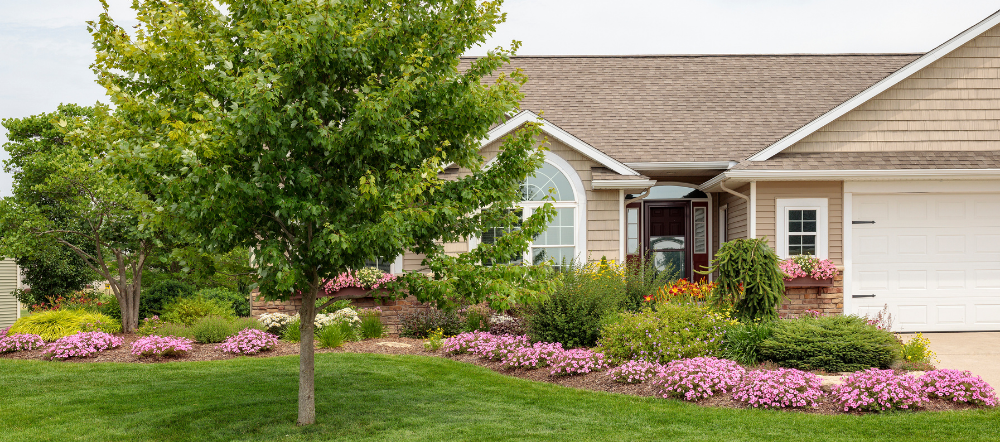The bubblegum petunia plant is a popular annual, known for its vigorous growth and beautiful pink flowers.
Regardless of how you came to discover the Bubblegum petunia name, we’re here to provide more information on what some consider to be the best summer annual. We’ll let you decide for yourself on that one.
First, what exactly are bubblegum petunias?
What are Bubblegum petunias?
Bubblegum petunias, officially known as Supertunia Vista Bubblegum, are spreading and mounding annuals in the petunia plant family known for their stunning display of solid pink blooms and vigorous growth.
These plants will grow to an impressive size, spreading as far as 2-6 feet in landscape (up to 5 feet diameter in a good year!) and mounding to heights of up to 2 feet! Just like petunias, they will want at least 4 hours of direct sunlight — lack of proper sunlight may result in less blooming or an unhealthy plant.
Before we dive into how to care for your Bubblegum petunias, here’s some quick information about Supertunia.
Note: Supertunia Vista Bubblegum is just one color/series of Supertunias.
About Supertunias
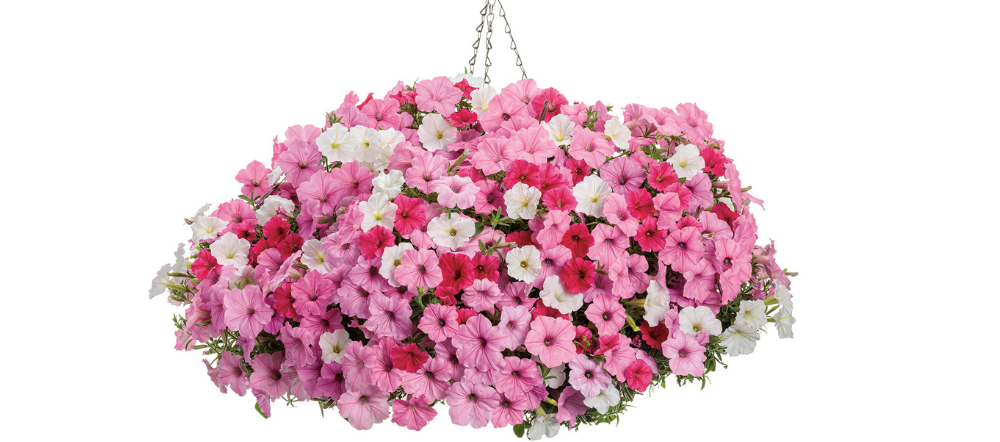
Supertunias are a series of petunia plant varieties developed by Proven Winners, deemed “the #1 plant brand.”
We refer to Proven Winners as the Cadillacs of our plants — overall, these plants are more vigorous growers, more hardy and resistant to diseases, and will typically perform very well if given the care they need.
Supertunias vs petunias
There are some significant differences between Supertunias vs. Wave petunias, Wave petunias vs. regular petunias, and Supertunias vs. regular petunias.
Wave petunia hanging baskets and Supertunia hanging baskets will both look great due to their abundant blooms and growth.
Supertunias set themselves apart from regular petunias by being self-cleaning, abundant in producing many flowers, and of course, more aggressive growth.
Proven Winners say these are “the best petunia. period.” From our experience with growing and selling these plants for many years, we have not been disappointed with them.
Clarifying “Bubblegum” petunias
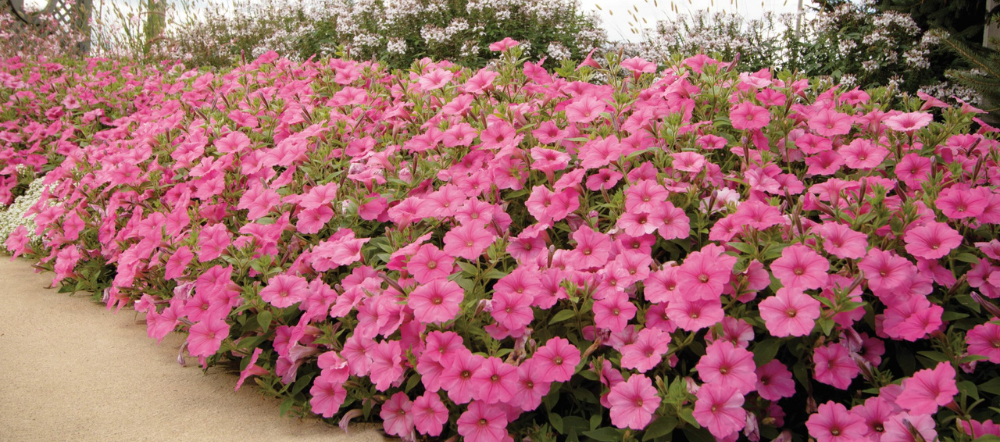
Before we go any further, one note is that many growers refer to these plants as Bubblegum petunias. As mentioned, these plants are technically Supertunias (which are still part of the petunia family), but the name “bubblegum” is referring to the color of the variety, not the whole category.
The series is called Supertunia Vista — this includes colors like the popular Bubblegum, but also other colors like:
In this post, we’ll be providing growing information for the Bubblegum color, since that has been the most popular, but most of the below information will apply to all colors in the Supertunia Vista series.
Now that we have that clarified, we can jump into how you can start growing your own Bubblegum petunias.
Finding Bubblegum petunias to grow
Supertunia Vista Bubblegum can only be purchased at growing centers and greenhouses that sell the Proven Winners brand. At Homestead Gardens, located in Lancaster County, PA, we’re a Proven Winners certified greenhouse, so we carry a few varieties of Proven Winners, including Supertunia Vista Bubblegum.
If you aren’t close to our greenhouse in Ephrata, PA, you can find other retailers that carry Proven Winners (and likely Bubblegum petunias) by using the brands’ retail locator.
Planting Bubblegum petunias
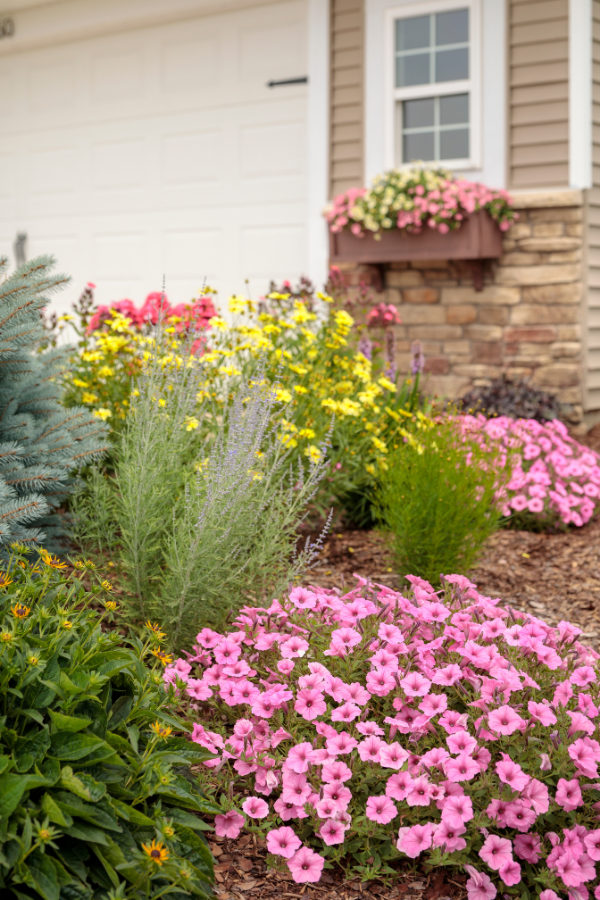
Curious about when to plant annuals outside, how far apart to plant, and where to plant your flowers?
Here’s some information on planting Bubblegum petunias to help guide you.
When to plant
After finding some Bubblegum petunias from your local greenhouse, you’ll want to plant them as early as possible (assuming it’s not too early in the spring).
The earlier these plants get in the ground the longer they will flourish for you!
In Pennsylvania’s growing zones, our Bubblegum petunias can be planted outside as early as April 1. This is much earlier than the traditional Mother’s Day recommendation for planting annuals outside since this variety of Supertunias is more resistant to the cold, when hardened off. Please make sure you check with the greenhouse you purchase the plants at to ensure it’s not too early to plant them outside.
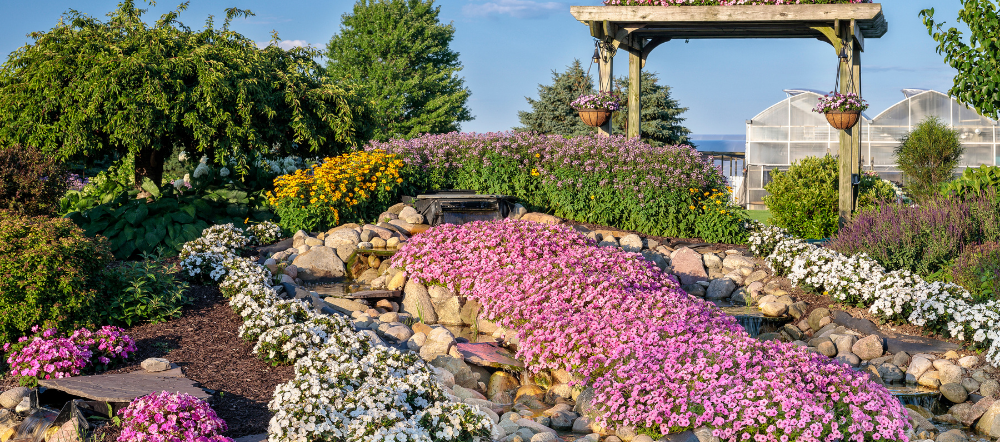
Temperature needs
Bubblegum petunias are extremely hardy and resistant to the cold, compared to other Supertunias and petunias as a whole. At Homestead Gardens we have even had our Bubblegum petunias out in freezing temperatures (where the plants were frozen solid) and these plants held up! For these extreme situations, it may take a few days for the plants to bounce back and look healthy again, but they have been able to survive.
That being said, we harden off our plants so that they are hardy and ready for the transition to your home. Briefly put, hardening off your plants is the process of exposing them to harsh conditions (as far as temperature, watering, etc.) early on in their growth so that it grows up more hardy.
Use caution for determining when to plant outside when purchasing Bubblegum petunias from greenhouses that do not harden off their plants.
Height & spread of Bubblegum petunias
When it comes to spacing for your Bubblegum petunias, you’ll want to make sure to give these plants plenty of space. As mentioned previously, one plant can grow as wide as 5 feet in diameter in a good growing season, so planting them too close together in the landscape will result in them running into each other. In some cases, gardeners prefer the plants to grow into each at least a little bit for a bolder look.
If you are planting Bubblegum petunias in a container, whether that be a planter or a hanging basket, Bubblegum petunias will fill in the space you give them. Make sure that you are choosing plants to combine with Bubblegum petunias with discretion — typically only another vigorous grower will be able to hold its own when in the same container as a Bubblegum petunia (or any Supertunia Vista for that matter).
At Homestead Gardens, we typically only plant 1-3 of only Supertunia Vista petunias in a container (normally hanging baskets). For most hanging basket sizes one Supertunia Vista petunia plant will fill up the basket and create a stunning display with draping foliage and abundant flowers.
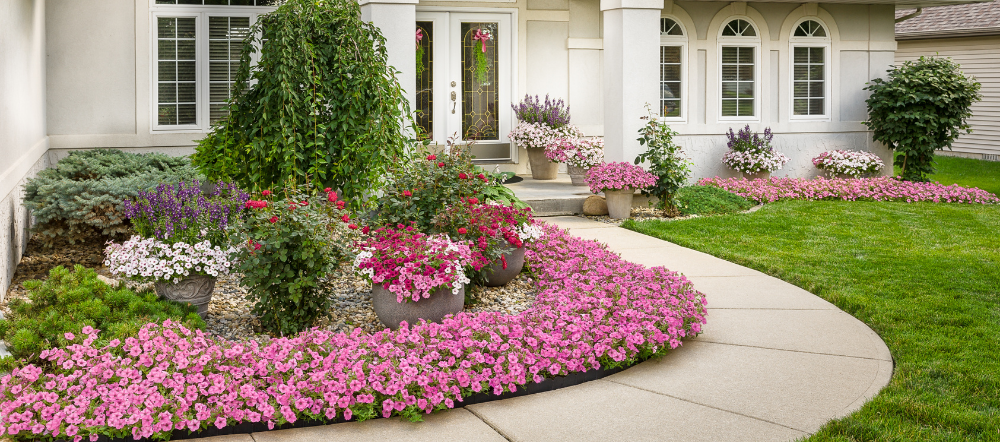
Bubblegum petunia care
One of the reasons that Bubblegum petunias are so popular is that they are extremely easy care. They typically are more resistant to drought, disease, and pests and don’t require as much fertilizer. Of course, they are not invincible, especially if it comes to being exposed to something as brutal as weed killer.
To get the most out of your Bubblegum petunia, here are some things to consider when caring for your plant.
Sunlight requirements
Hopefully, you were able to plant your Bubblegum petunia in an area with plenty of sunshine, since petunias are sun-lovers. If these plants get at least a half-day of sun they should grow great. Anywhere from 4 to 6 hours of direct sunlight will give this plant the light it needs to grow and flower well.
If you have your Bubblegum petunias in a container and you notice it isn’t flowering or growing as expected, it may need more light. Try placing the container in a different spot where it’ll get more light and see if your plant starts looking a little more healthy.
Soil type
Bubblegum petunias will perform best in well-drained soil — although they are more resistant to diseases such as root rot, any plant will be more susceptible to disease if attempting to grow in water-logged soil. This is the case for all petunias!
Petunias as a whole also prefer slightly acidic soil (somewhere in the pH range of 5.5 to 6.5).
How to fertilize
Bubblegum petunias will need some nutrients, at least to get a good start.
You can choose to build up the soil that you are growing in beforehand, plant the Bubblegum with some slow-release fertilizer (especially for container gardening), apply liquid fertilizer throughout the summer, or do a little bit of all of the above. Use caution that you don’t over-fertilize these plants.
If the Bubblegum petunias are growing in a planter, container, or hanging basket, you may want to fertilize them more often. For most plants, applying liquid fertilizer (small concentration) every third watering is enough to provide the plant with the nutrients it needs. Of course, blanket statements can rarely be made for growing, so you use your own discretion when feeding your Bubblegum petunias.
How to water
Watering needs for Bubblegum Supertunias will vary depending on whether they are planted in landscape or container.
For landscape planting, Bubblegum petunias do not need a lot of water — certainly, water if it looks like they are drying up (wilting or the soil around the plant is not moist), but overall they are sun-loving plants so they can take the heat a little better than other plants.
Early on, even when planting in the landscape, the plant needs some extra watering to get started.
When growing Bubblegum petunias in containers, whether it be a hanging basket or a planter, make sure you regularly water the plants. If you have multiple Supertunias in the same container, this is even more important.
Propagating
Since the Bubblegum petunia is a patented plant by Proven Winners, propagating Supertunia Vista Bubblegum for resale is illegal.
Garden centers and greenhouses aren’t able to grow this plant from seed, so Proven Winners plants are often started from plugs, nurtured, hardened off, and then sold as small plants ready to grow at your home!
Disease and pest control
As mentioned before, Bubblegum petunias are known for being more resistant to disease and pests.
Still, with especially bad cases of diseases or pests, these plants can be affected.
Some pests that you might want to keep an eye out for include:
- Mites
- Caterpillars
- Thrips
As far as diseases, some common diseases that petunias are more prone to are:
- Root rot (or stem, crown rot)
- Blight
- Powdery Mildew
- Verticillium Wilt
- Viruses
There are natural sprays that can be purchased at your local garden center to combat disease or pests.
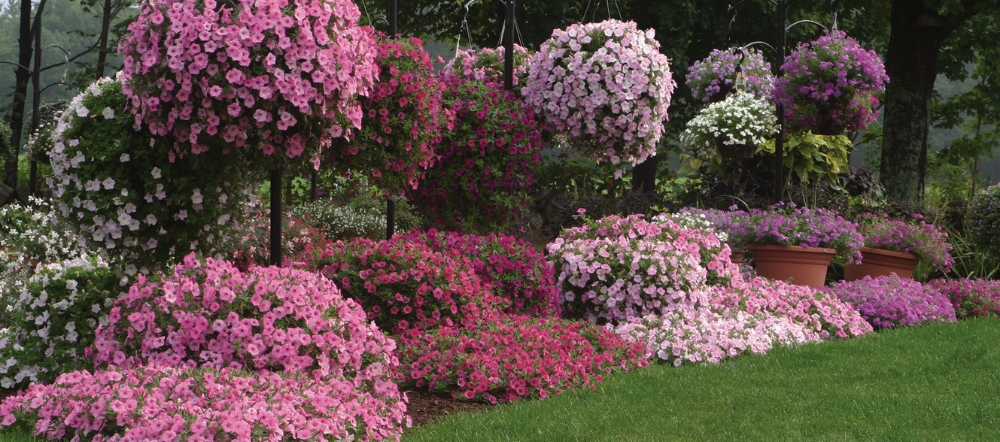
Growing Bubblegum petunias
Overall, Supertunia Vista Bubblegum is a popular plant for a reason: their vigorous growth, constant blooms, easy care, and stunning display are hard to ignore.

